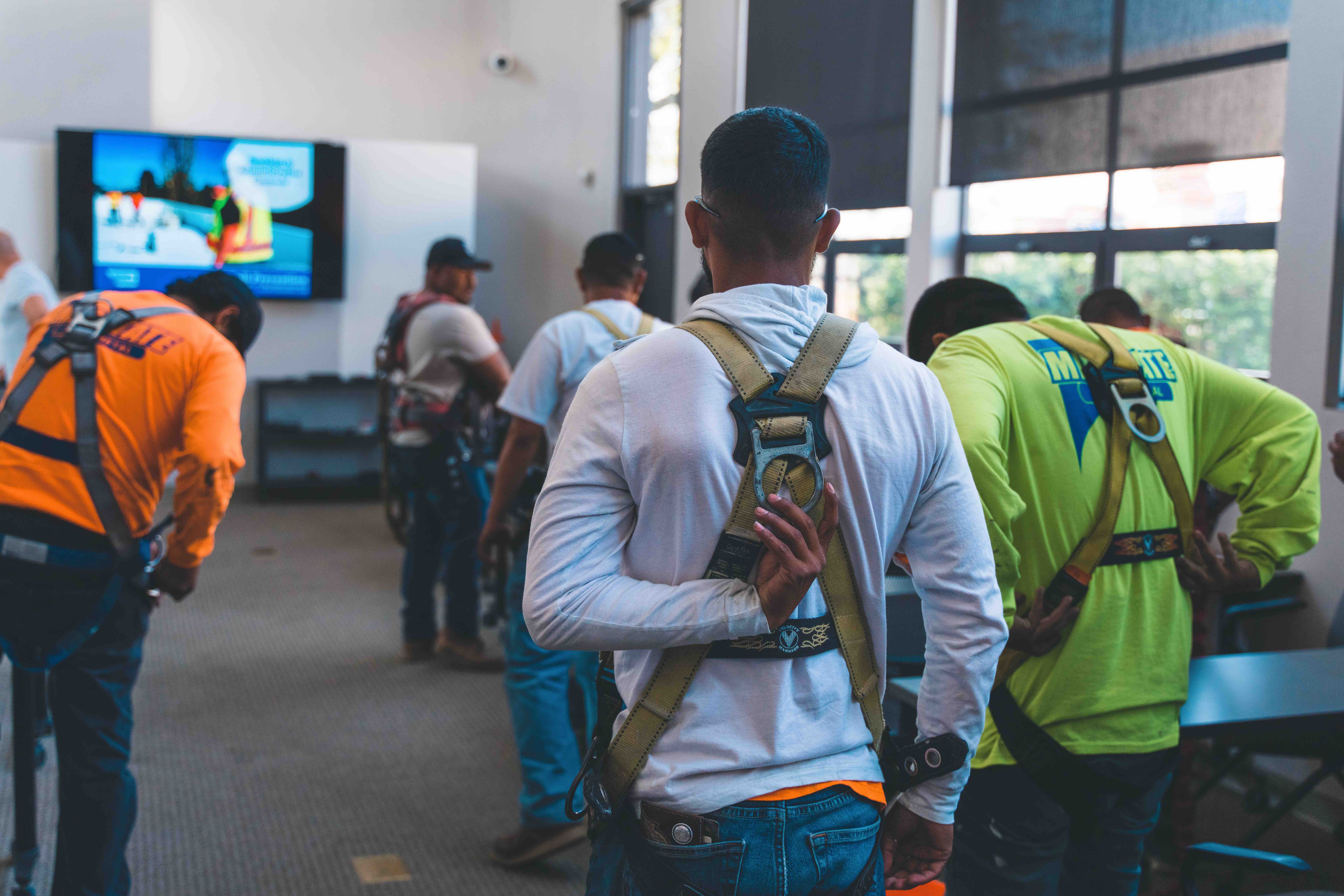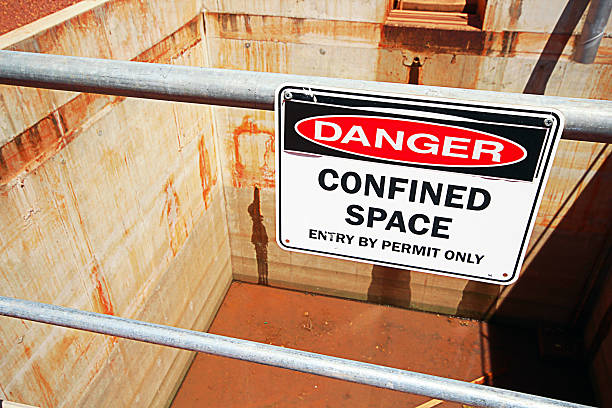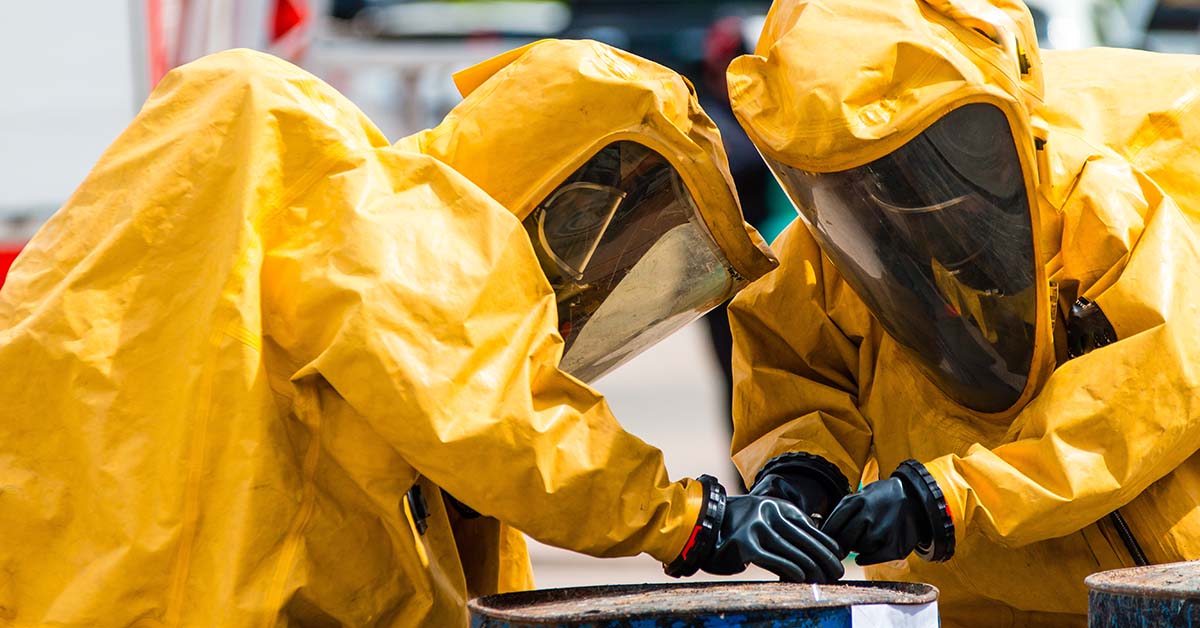Navigating Confined Spaces: The Key Elements of Effective Training
As a worker, you may be required to enter confined spaces as part of your job. Confined spaces are areas not designed for continuous occupancy and...
4 min read
McKenzie Swisshelm
:
May 21, 2023 7:51:02 PM

Working at heights is unavoidable in many industries, including construction, maintenance, and telecommunications. However, with the increased risk of falls, it is crucial to implement suitable fall protection solutions to ensure the safety of workers. This comprehensive guide will discuss the various types of fall protection solutions, their applications, and the importance of selecting the right solution for specific tasks.
Fall protection can be broadly classified into two main categories: passive and active. Passive fall protection systems do not require any action from workers once installed and provide constant protection against falls. In contrast, active fall protection systems require workers to actively participate in using and maintaining the system to ensure their safety. Within active fall protection, there are further subcategories, such as fall restraint and fall arrest, which we will discuss in detail.
Before diving into the specific types of fall protection solutions, it's essential to understand the fall protection hierarchy. This hierarchy is a systematic approach to selecting the most appropriate fall protection method for a task.
As mentioned earlier, passive fall protection systems do not require any action from the workers once installed. They provide constant protection against falls, making them an ideal solution for many work environments. Some common types of passive fall protection include:
Guardrails are physical barriers installed along the edges of elevated work surfaces to prevent workers from falling. They are a simple and effective solution to protect workers in areas with fall hazards. Guardrails can be permanent or temporary, depending on the work environment and the duration of the project.
Safety netting is another passive fall protection solution used to catch falling workers and prevent them from hitting the ground or lower levels. They are typically installed below work surfaces, such as construction sites or building maintenance projects, where the risk of falling is high. Netting systems must be carefully designed and installed according to industry standards to ensure maximum effectiveness.
Covers are used to protect workers from falling into holes or openings in the work surface. They can be made of various materials, such as metal, wood, or plastic, and must be strong enough to support the weight of a worker. Covers should be securely installed and clearly marked to alert workers of potential fall hazard.
When passive fall protection systems are not feasible, active fall protection solutions must be employed. These systems require workers to actively participate in their use and maintenance to ensure their safety. Active fall protection can be further divided into fall restraint and fall arrest systems.
Fall restraint systems are designed to prevent workers from reaching the edge of a fall hazard. They typically consist of a full-body harness, a lanyard, and an anchorage point. The lanyard is adjusted so that the worker cannot reach the edge of the fall hazard, effectively restraining them from falling.
Positioning systems are a type of fall restraint that allows workers to work hands-free while securely attached to an anchor point. These systems are commonly used with ladders or other elevated work surfaces. Although positioning systems do not prevent falls entirely, they provide additional support and stability for workers, reducing the risk of falls.
Horizontal lifelines are another fall restraint solution that provides continuous protection for workers as they move along an elevated work surface. These systems consist of a flexible cable or rope connected to multiple anchor points, allowing workers to attach their harnesses and move freely without needing constant reattachment.
Fall arrest systems are designed to catch and safely stop a worker who has already fallen. They typically consist of a full-body harness, a lanyard or self-retracting lifeline, and anchor points. In the event of a fall, the fall arrest system is activated, arresting the fall and preventing the worker from hitting the ground or a lower level.
A personal fall arrest system (PFAS) comprises a full-body harness, a lanyard or self-retracting lifeline, and an anchorage point. PFAS are designed to arrest a worker's fall and distribute the impact forces throughout their body, minimizing the risk of injury. OSHA standards require PFAS to limit the impact forces of a fall to 1,800 lbs. or less.
A full-body safety harness is a crucial component of any fall arrest system. It is designed to distribute the forces of a fall evenly across the worker's body, minimizing the risk of injury. Harnesses should be selected based on the type of work being performed and must be used in conjunction with appropriate anchorage and deceleration devices.
Lanyards and self-retracting lifelines are used to connect the worker's harness to the anchor point. They come in various lengths and types, each designed for specific purposes. Some common types of lanyards include shock-absorbing lanyards, which reduce the impact forces of a fall, and self-retracting lifelines, which automatically retract to maintain tension and prevent slack in the system.
Anchor points are critical to any fall arrest system, as they provide a secure attachment for the worker's harness and lanyard. Anchor points must withstand a minimum of 5,000 lbs. or twice the anticipated load of a person free-falling a distance of 6'. Therefore, it is essential that qualified professionals engineer and install anchor points to ensure their effectiveness.
In addition, to fall restraint and arrest systems, it is essential to have a rescue plan in place for workers who have experienced a fall. Retrieval systems, also known as rescue systems, are designed to safely retrieve fallen workers and minimize the risk of further injury during the rescue process.
A well-developed rescue plan is a crucial component of any fall protection program. This plan should outline the steps to be taken in the event of a fall, including the use of rescue and retrieval equipment, emergency communication procedures, and first aid measures. Regular training on rescue procedures is essential to ensure that all workers are knowledgeable and prepared to respond effectively during a fall.
Selecting the appropriate fall protection solution depends on the specific work environment and tasks being performed. Therefore, it is essential to conduct a thorough assessment of the fall hazards present and consider the fall protection hierarchy to determine the most effective solution.
Some key factors to consider when choosing a fall protection system include:
In conclusion, understanding the various types of fall protection solutions available and selecting the most appropriate system for the specific work environment and tasks is crucial to ensuring worker safety. By implementing effective fall protection measures and training workers on their proper use, employers can significantly reduce the risk of falls and related injuries in the workplace. Partnering with A&H Safety Services can provide expert guidance, comprehensive solutions, and industry-leading training programs to establish a robust fall protection system tailored to your organization's needs. Take proactive steps today and make A&H Safety Services your trusted partner in creating a safer work environment.

As a worker, you may be required to enter confined spaces as part of your job. Confined spaces are areas not designed for continuous occupancy and...

As an employer, you are responsible for ensuring that your employees are safe and healthy in the workplace. One way to ensure that your employees are...

Working at heights is unavoidable in many industries, including construction, maintenance, and telecommunications. However, with the increased risk...